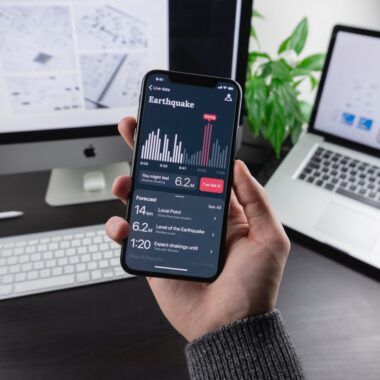Evolution of IoT software development services

As the world of technology advances, we see a dramatic leap in IoT software development. Although IoT devices are still in process of evolution, the service of connecting them and implementing them into businesses has reached an impressive level.
At the current level of development, IoT technology has revolutionized the way businesses plan operations. It proved to be a cost-saving solution across industries. Logistics, manufacturing, retail, and even healthcare managed to take their services to the next level while optimizing operational expenses.
Let’s look at the stages that the process went through to reach the state we know now:
- Early stage
In the beginning of IoT, programming designers zeroed in on making custom IoT answers for explicit businesses or use cases. These arrangements were created utilizing exclusive advances and structures, making them costly and challenging to keep up with.
- Standardization: As the IoT market expanded, the need for standardization became vital. Standardization made IoT development more accessible and affordable, allowing developers to use open-source platforms and tools.
- Logitech Keyboard Software: Cloud services, like Amazon, transformed the way IoT software development was carried out. They provided scalable, flexible, and cost-effective solutions for IoT development, making it easier for developers to create and manage IoT applications.
- Analytics and Machine Learning: With the rise of IoT data, the need for analytics and machine learning appeared. These technologies allowed developers to extract valuable insights from IoT data, making IoT applications more intelligent and effective.
- Security: As IoT devices become more interconnected, security has got into the spotlight. IoT software development services now concentrate on providing secure solutions to protect data and devices from malicious attacks.
- Interoperability: With the proliferation of different IoT devices and platforms, the need for interoperability emerged. IoT software development services now provide solutions that can integrate with various devices and platforms, enabling seamless communication between them.
- Edge Computing: Edge computing is a newer technology that is gaining popularity in custom IoT development. Edge computing allows data processing to take place on IoT devices themselves rather than relying on cloud services, resulting in faster response times and reduced bandwidth requirements.

What are the prospects of IoT software development?
Here are some of the developments we can expect to see in the future of IoT software development:
- More Intelligent Applications: With the integration of machine learning and artificial intelligence, IoT applications will become even more intelligent, enabling them to make more informed decisions and automate processes with greater accuracy.
- Increased Focus on Data Analytics: As IoT devices generate more and more data, the focus will shift to analytics and insights, enabling businesses to make data-driven decisions and identify new growth opportunities.
- Improved Security: As the number of connected devices continues to grow, so does the threat of cyber attacks. Future IoT software development will focus on implementing robust security measures to protect data and devices from malicious attacks.
- Interoperability: As the number of IoT devices continues to increase, interoperability will become even more important, with a focus on developing solutions that can seamlessly communicate with each other, regardless of the manufacturer or technology used.
- Edge Computing: The use of edge computing will become more prevalent, enabling real-time data processing and analysis on IoT devices themselves, reducing latency and increasing performance.
- Increased Adoption in Emerging Markets: As the cost of IoT devices continues to decrease, we can expect to see an increase in IoT adoption in emerging markets, creating new opportunities for businesses and developers.
- Emphasis on User Experience: With the proliferation of IoT devices, user experience will become even more important, with a focus on developing intuitive and user-friendly interfaces that can be easily integrated into people’s daily lives.
Final Thoughts
The future of IoT software development is innovative, with new useful advancements on the horizon. Developers and businesses must keep up with the latest technologies and trends to take advantage of the opportunities that IoT brings. By focusing on intelligent applications, data analytics, security, interoperability, edge computing, and user experience, the future of IoT software development is set to transform all aspects of our lives and jobs. More opportunities will open not only for businesses but for the clients and consumers of the services. People can greatly benefit from the technological revolution since goods will become available worldwide in the most distant locations.
